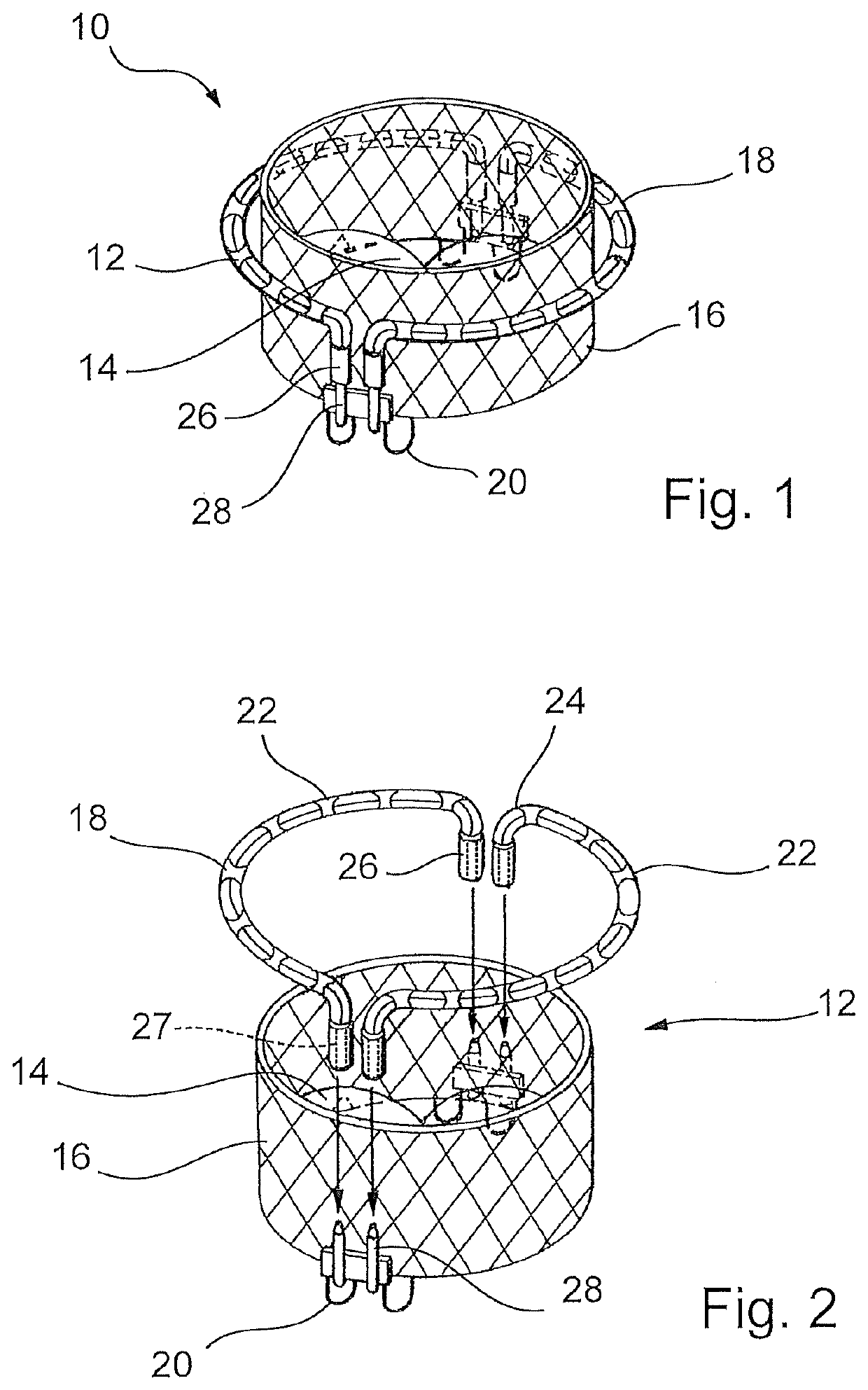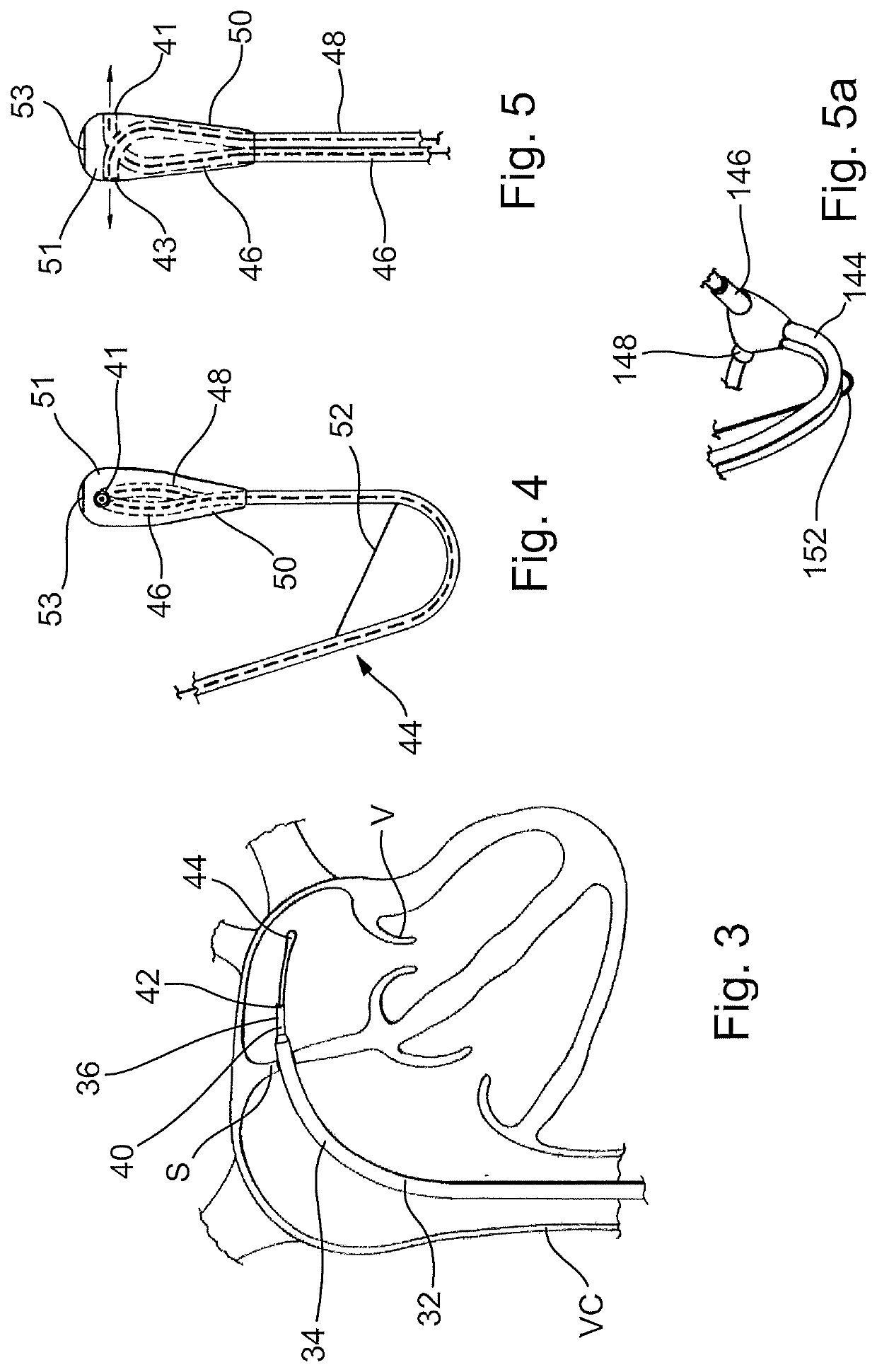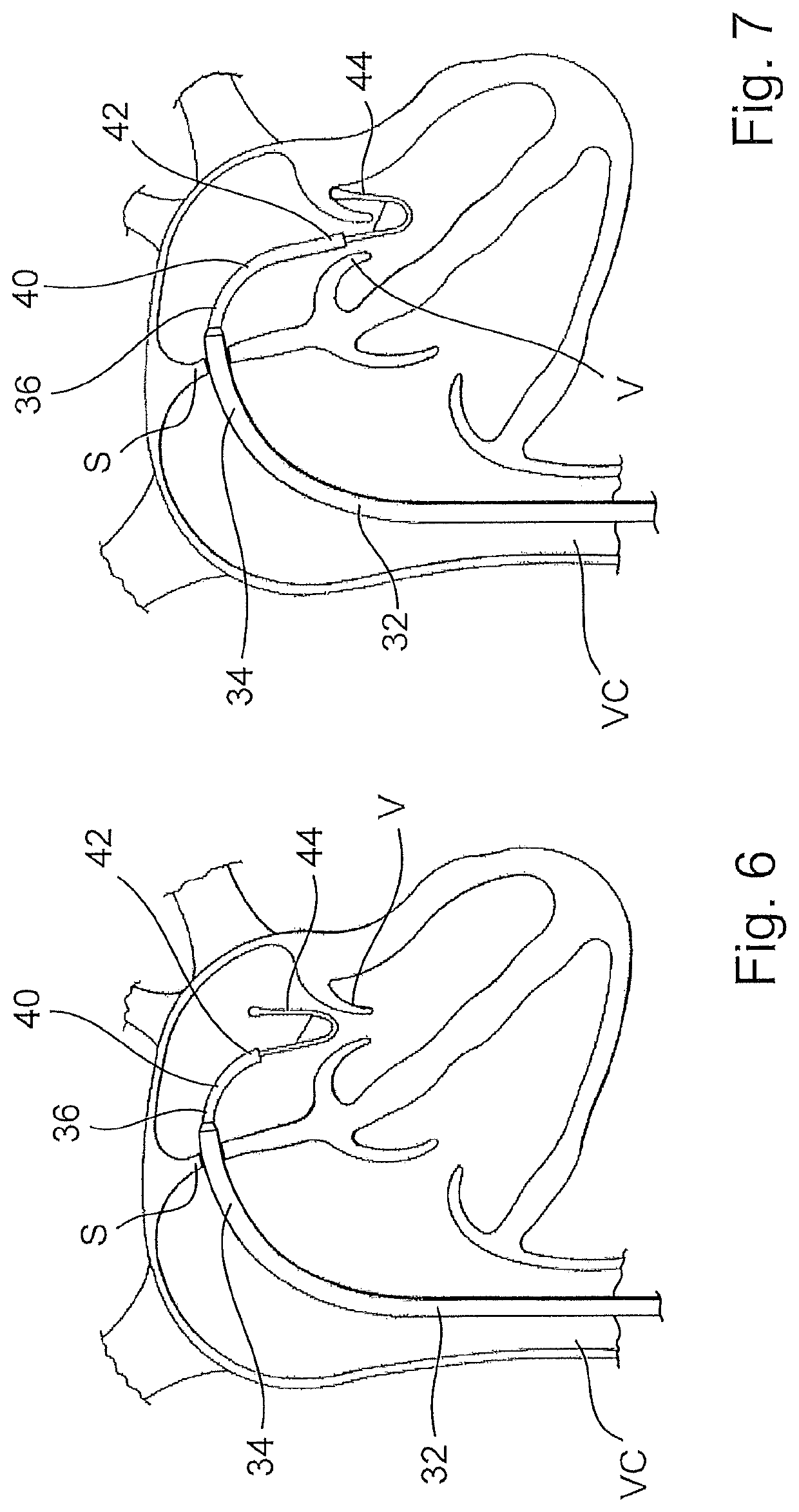Device for implanting a prosthesis for a heart valve and assembly procedure
a heart valve and prosthesis technology, applied in the field of heart valve prosthesis implanting device and assembly procedure, can solve the problems of reducing efficiency, complex and delicate heart valve organs, and high impairing valve pathology
- Summary
- Abstract
- Description
- Claims
- Application Information
AI Technical Summary
Benefits of technology
Problems solved by technology
Method used
Image
Examples
Embodiment Construction
[0069]Now with reference to the drawings, in FIGS. 1 and 2 there is described an implantable heart prosthesis 10 which is used to replace the functionality of an atrio-ventricular valve.
[0070]The heart prosthesis 10 comprises a prosthetic structure 12 for support and interfacing with the native valve and by a group of flexible prosthetic leaflets 14 which are fixed therein. The prosthetic structure 12 comprises in particular:[0071]a central body 16,[0072]a containment portion 18,[0073]connecting elements 20 for connecting the central body 16 and the containment portion 18.
[0074]The prosthetic structure 12, as for each of the elements thereof, is configured so as to be collapsible without any consequence for the safety and the functionality of the heart prosthesis. Therefore, it is possible to temporarily reduce the radial dimensions of the prosthesis in order to allow the introduction thereof inside the cardiac cavities through access ports which have a reduced aperture and which ar...
PUM
 Login to View More
Login to View More Abstract
Description
Claims
Application Information
 Login to View More
Login to View More - R&D
- Intellectual Property
- Life Sciences
- Materials
- Tech Scout
- Unparalleled Data Quality
- Higher Quality Content
- 60% Fewer Hallucinations
Browse by: Latest US Patents, China's latest patents, Technical Efficacy Thesaurus, Application Domain, Technology Topic, Popular Technical Reports.
© 2025 PatSnap. All rights reserved.Legal|Privacy policy|Modern Slavery Act Transparency Statement|Sitemap|About US| Contact US: help@patsnap.com



